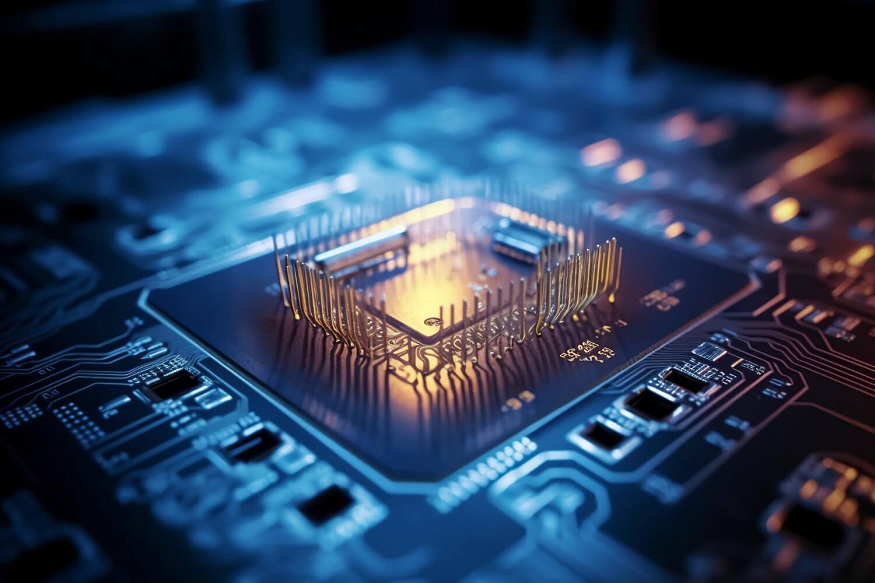In today’s world, where portable electronic devices have entered our lives, power saving has become an important and practical problem for hardware designers to fulfil. Battery-powered equipment with a long battery life has boosted VLSI (Very Large-Scale Integration) research and implementation, which employs various low-power design methods. These strategies are crafted as hardware solutions to lessen the usage of power while at the same time being careful to maintain the best performance as a way to prolong the service and achieve an efficient user experience.
Introduction: The significance of low-power VLSI design
The development of technology has mainly accelerated and made the sizes of its components smaller, which consequently has been the cause for building devices that are small and power-minimum. But that being said, as the devices are growing in terms of the complexity of their structures, power designers are faced with the challenge of low power consumption that will not drawback the function of these devices. It is then that the low-power VLSI techniques are implemented to design the microprocessors.
Energy-efficient hardware solutions that will particularly benefit battery-powered devices such as smartphones, tablets, wearables, and IoT devices constitute the very base of this infrastructure. Such devices need batteries to power them, and this optimization has the same amount of energy performance. It is low-power VLSI design techniques that matter for battery life while making it possible to provide the user with a very involving experience.
Leading low-power VLSI design techniques
Clock Gating:
Clock gating is a method that disables the clock signal from any activated circuit block when it is not in use. Idle and even low-activated states can be improved by reliable control of the clock signal, which in turn leads to a better decrease in excess power consumption.
Power Gating:
Power shutting off is the process in which power is fully disconnected from the unused or idle paths. This method results in a static power decrease; an element very useful in achieving longer battery life in standby modes.
Voltage Scaling:
Voltage scaling manipulates the voltage of the VLSI circuits according to the application requirements or the level of performance desired. Lowering voltage during low-intensity tasks helps conserve power without compromising performance, which makes it a versatile way of designing systems to conserve energy.
Dynamic Power Management:
Static power management solutions encompass the control of factors such as the clock frequency, supply voltage, and operation modes regulated to the point of the workload. Thanks to power management at runtime, which allows a design to achieve a mix of performance and power efficiency, hardware designers will accomplish this.
Low-Power Design Libraries:
Power-efficient libraries that contain optimized circuit components particularly designed to cut down on power consumption are available via low-power design library usage. This set of libraries comprises a range of low-power design alternatives for logic gates, flip-flops, and other essential network components required in VLSI system design.
Role of the hardware designer
A hardware designer has the responsibility to implement the low-power VLSI design methods most efficiently. This knowledge base is useful in the areas of circuit design, simulation, and optimization, which guarantees that the most energy-efficient solutions will be obtained for battery-powered devices. The hardware designers from engineering and architectural areas blended low-power improvement at the system level with engineers to make sure of the low-power performance and good functionality of the system.
The hardware designers use CAD (computer-aided design) tools, simulation tools, and power analysers to evaluate and optimize the designs for low power as well. They run extensive testing and perform analysis to find favorable areas for improvement and also apply innovative solutions that lead to a decrease in power use without compromising the effectiveness of the device.
As a result, the hardware designers work together with other stakeholders, such as the software developers, to take care of power management at the software level by implementing power-aware algorithms and techniques. This whole approach guarantees that the interaction between hardware and software provides the best result of low power use.
Emerging trends in low-power VLSI design
Energy Harvesting:
Integrating energy harvesting strategies into battery-powered devices such as sun cells and kinetic strength harvesters can offer strength for the operation. This enables preserving battery strength and power.
Advanced Power Management Units (PMUs):
PMUs that have advanced functions, isotropic voltage and frequency scaling, and smart power coupling are the way forward to achieve more effective energy management.
Machine Learning for Power Optimization:
Machine learning technologies able to discover system performance at every stage could be used for proactive power optimization strategies for saving energy, which would be among the most important applications of these algorithms.
Ultra-Low-Power Process Technologies:
Going ahead, an increase in semiconductor fabrication processes domestically will eventually result in the development of very low-power chips with the best performance-per-watt measurements, making them useful for battery-operated gadgets.
Cross-Layer Optimization:
A close-knit work of hardware, software, and system architects to enable power-efficient devices to operate at the optimum power levels in all the layers of the system shall deliver a holistic solution for low-power devices.
Through the adoption of the mentioned changing trends and the cooperation of well-trained hardware designers, the future of low-power VLSI designs looks extremely bright, with more energy-efficient and eco-friendly solutions for battery-based gadgets. The progress and partnership in this area will create an advanced and competent tomorrow, probably for small devices.
Conclusion:
As the demand for energy-efficient and handheld electronic devices has been rising steadily across the world, the role of low-power VLSI design techniques is more and more significant. Hardware developers hold an indispensable position, helping to carry innovation and advanced solutions into the marketplace that customers are eager to purchase.
Advances in vlsi system on chip design allow for the placement of several functionalities on a single chip. Such optimization of power consumption minimizes energy consumption and, at the same time, improves performance. In the future, the main focus of VLSI design will be energy efficiency, which will give more opportunities to manufacture devices that are sustainable and user-friendly in terms of the battery.










